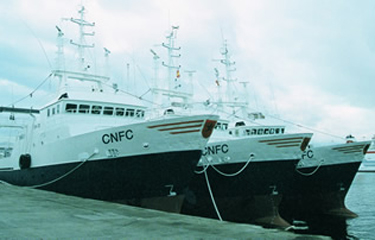One of China’s leading fishery firms is flagging poor results for 2019 due to a combination of reduced trawler subsidies, global oversupply of tuna, and a failed investment in an insurance firm.
CNFC Overseas Fishery Co Ltd, the listed arm of China National Fisheries Co, is flagging profits of between CNY 18 million and CNY 25 million (USD 2.5 million to USD 3.5 million, EUR 2.6 million and EUR 3.6 million), a drop of between 56 percent and 68.5 percent on 2018 results.
In a letter to investors, the company claimed “reduced subsidies for renovations of vessels” as a key reason for the results, alongside a CNY 200 million (USD 28 million, EUR 28.6 million) loss reported at Hua Nong Financial Services, an insurance joint venture which the firm has since exited.
Profitability remains modest at CNFC, considering the company claims to have a fleet of more than 250 vessels and a multinational seafood processing business. Its revenues and profits are flat compared to five years ago, raising questions regarding the success of the state-owned firm’s recently executed expansion plans. Profits fell 64 percent to CNY 20.1 million (USD 3.21 million, EUR 3 million) in 2014, with the state-controlled giant blaming a 14 percent fall in prices for its fish in 2014 for the slump in profit.
Fishing subsidies have helped the company cover its flagging profitability, with a CNY 61.3 million (USD 8.8 million, EUR 8.1 million) subsidy payout helping CNFC Overseas Fishery Co book a profit for the first three quarters of 2019. But overall profits in the third quarter slipped 6.6 to 10.5 percent year to CNY 56 million to CNY 58 million (USD 7.8 million to USD 8.1 million, EUR 7.4 million to EUR 7.7 million). The subsidy, which was ostensibly paid out as compensation for improvements the company made to its fleet, helped erase a CNY 45.3 million (USD 6.3 million, EUR 6 million) deficit recorded for the first half of 2019.
While CNFC has collected vessel-improvement subsidies for years, it’s not clear from CNFC’s statement if its fleet will be eligible for future refurbishment grants. The company and other large distant-water fishing firms face an uncertain future given increased global focus on illegal fishing and World Trade Organization pressure on China to agree a deal to reduce subsidies that support overfishing.
Dependent on fuel subsidies for the profitability of its distant-water activity, CNFC lacks the financial muscle of conglomerates like New Hope Liuhe, Guangdong Haid, and the Tongwei Group, which have all entered the aquaculture and mariculture spaces with a background in niches like nutrition, antibiotics and combined aquaculture-solar initiatives. If China decides to switch its subsidies from distant-water fisheries to aquaculture, CNFC, which has limited exposure to fish farming, could be fatally harmed.
In addition to its vessel improvement subsidies, China’s government paid out CNY 72.8 billion (USD 10.1 billion, EUR 9.6 billion) in diesel fuel subsidies for the fishing sector in 2018, accounting for 81.66 percent of the government’s total subsidies of China’s aquaculture and fisheries sectors, according to official documents. While totals for 2019 are not yet available, the government has given no signal it intends to cut its fuel subsidies for Chinese fishing companies.
A trove of national and regional government documents reviewed by SeafoodSource show the Chinese government also subsidizes 25 percent of the premium for insurance paid by aquaculture and fishing companies, up to a maximum CNY 200,000 (USD 28,600, EUR 26,500) per person. Additionally, China pays subsidies to aquaculture producers at CNY 0.06 (USD 0.0086, EUR 0.0079) per head on tilapia, CNY 20 (USD 2.85, EUR 2.65) per 10,000 head of shrimp, and CNY 0.20 (USD 0.029, EUR 0.026) on grouper seedlings, ostensibly to encourage efficiency and quality.
Subsidies are also paid on a per-mu basis (15 mu equals one hectare) to farmers who meet the classification of performing “ecological” production. Farmers can also apply under an agriculture mechanization scheme for subsidies for equipment such as pond aerators. Additional subsidies are also paid for initiatives deemed priorities by regional governments.
In its letter, CNFC did not say whether it would try to pivot to continue to capture subsidies or whether it would seek to focus on distant-water fishing even if China’s national government decides it will no longer subsidize that sector.
Photo courtesy of CNFC







